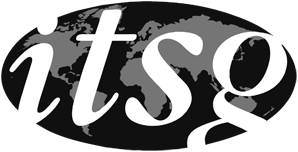Corporate Tax Guide: Luxembourg

Members:
- Bernard Felten (Felten & Associés)
|
1. Country
The information is valid for the entire country except where indicated. For example, in the case of Malaysia, Labuan is part of Malaysia but has a special tax regime, so this is noted. |
Grand Duchy of Luxembourg | |||||||||||||||||||||
|
The corporate tax rate shown is the typical corporate tax rate that a domestic corporation owned by non-resident persons would pay. The tax rate does not include withholding tax on dividends, but does include a distribution tax shown separately if applicable. Certain countries have a low corporate tax rate, but charge an additional tax when a dividend is distributed. Because this tax is paid by the corporation, and not deducted from the amount of the dividend itself, it is not a dividend withholding tax. As a result, it typically cannot be reduced by an international tax treaty. |
| |||||||||||||||||||||
|
The basis of taxation for a corporation will typically be one of:
|
Worldwide income. | |||||||||||||||||||||
|
Where non-resident corporation carries on business in a country, business profits may be subject to corporate tax. In addition, a branch profits tax may apply in lieu of dividend withholding tax. This branch profits tax applies to the after tax profits, typically at a fixed percentage. An international tax treaty may reduce the rate of branch profits tax, typically to the rate provided for dividend withholding. |
No. | |||||||||||||||||||||
|
The common forms of business entity are noted. In addition, the entities which are flow through entities for U.S. tax purposes are indicated. |
Capital companies:
Others Entities Subject to Corporate Tax (but with most income exempted):
| |||||||||||||||||||||
|
Capital gains may be fully taxed, partially taxed or not at all. In certain countries, an exemption, called the participation exemption, will apply to exempt from tax a capital gain from disposition of a substantial holding of shares of a subsidiary. Where a participation exemption is applicable, it is noted together with a summary of the main conditions. |
Parent-subsidiary regime: income from sale of shares is exempted from income taxes when:
| |||||||||||||||||||||
|
Certain countries allow group taxation, otherwise known as consolidated tax filing. Here the tax returns of a group of corporations in the country may be combined together, which can be useful. If group taxation is permitted, it is noted along with the main conditions. |
Yes. Optional tax consolidation regime allows companies of the group to compensate their profits with their losses, and to be taxed on the overall sum as a single payer. This regime can be adopted between parent and subsidiaries or between subsidiaries of the same parent, on the condition that, inter alia, the parent holds 95% of the subsidiaries. | |||||||||||||||||||||
|
Countries offer various kinds of special exemptions and incentives. Examples are a reduced tax rate, a tax holiday, a tax credit on the purchase of equipment, special accelerated deductions for deprecation, incentives for R&D, and various others. Here the major items are noted. |
| |||||||||||||||||||||
|
Many countries have thin capitalization rules which limit or deny the deduction of interest expense in certain circumstances. For example, if debt exceeds three times equity, a proportionate amount of interest expense may not be deductible. Limitations take various forms, restricting the interest expense deduction to a percentage of profit, deeming the debt to be equity and the interest to be a payment of dividends, and various other rules which may blend of these principles. Where a country has thin capitalization rules, they are briefly described. |
Yes. Not provided by tax law, but in practice, tax authorities apply an 85:15 debt-to-equity ratio for the intra-group financing of participations. | |||||||||||||||||||||
|
Many countries have transfer pricing rules. They very often follow the OECD guidelines and the arms length principle. Some countries have specific rules which apply in certain cases. In addition, some countries allow for a selection of the most appropriate transfer pricing methodology in the circumstances, while other countries follow a hierarchy of methods, with the CUP method (comparable uncontrolled price) often ranking first. The transfer pricing rules are briefly explained. |
Yes. OECD Guidelines / BEPS. Arms length principle: comparability analysis and adjustment on the reported profits if the transfer price differs. | |||||||||||||||||||||
|
11. CFC Rules
Many countries tax passive income earned in controlled foreign corporations (CFC’s) on an imputation basis while active income is not taxed. Such CFC rules are usually complex and vary significantly in what is considered passive income, and how foreign tax paid is taken into account. Some countries approach CFC rules on the basis of whether or not the foreign corporation is resident in a low tax jurisdiction or a tax haven. This may be done through a black list of countries. The general overview of CFC rules is described in simple terms. |
N/A | |||||||||||||||||||||
|
Profits repatriated by way of dividends from a subsidiary to a parent company are typically taxed in one of three ways:
|
Parent-subsidiary regime: if a parent company holds at least 10% of its subsidiary’s share capital or its shareholding amounts to EUR 1,200,000, then the dividends received are exempted from income taxes. To benefit from this regime, the subsidiary must be fully taxable regardless of its jurisdiction (i.e., not an exempted entity or subject to a corporate income tax rate of less than half of Luxembourg’s rate). Other dividends received from Luxembourg companies, companies in treaty country and European Union countries are exempted at 50%. Other dividends received from non-EU, non-treaty country are taxable. | |||||||||||||||||||||
|
Most countries allow a foreign tax credit based on a formula, typically net foreign income over the net income times taxes payable. This limits the foreign tax credit to roughly the domestic tax otherwise applicable to the foreign income. There are numerous variations and technical rules in the details of foreign tax credit calculations. Where a foreign tax credit is allowed, the general principles are described. |
N/A | |||||||||||||||||||||
|
14. Losses
Losses typically can be carried forwards for a period of years, and sometimes can be carried back. Losses may be segregated into capital losses and non capital losses. |
Losses incurred until 31 December 2016 can be carried forward without limitation of time. Losses incurred as of 1 January, 2017 can be carried forward for 17 years. Losses cannot be carried back. | |||||||||||||||||||||
|
It is not practical to list all of the tax treaties which a country has in a simple guide like this. Accordingly, a link is provided in each case to the tax treaties. Some countries have entered into Tax Information Exchange Agreements (TIEA). Treaties are more and more containing provisions that limit benefits (LOB provisions). |
77 tax treaties (under negotiation: 17). | |||||||||||||||||||||
|
Withholding tax rates vary considerably from treaty to treaty, and countries may have domestic exemptions applicable in certain circumstances (for example copyright royalties, interest paid to arm’s length persons, etc.). A table shows the typical rates but cannot adequately summarize all of the details. The applicable treaty should be consulted. |
| |||||||||||||||||||||
|
17. Taxation Year
Some countries allow for the selection of year-end while other countries specify a particular year-end which all business entities must have. Normally the taxation year cannot exceed 12 months. Where it can exceed 12 months, this is noted. |
Calendar year. | |||||||||||||||||||||
|
This is the due date for filing a tax return. Where extensions are available, this is noted. |
Before 31 May of each year. | |||||||||||||||||||||
|
19. Tax Instalments
The typical tax instalment requirements are noted. |
Yes, mandatory. Every three months. Based on previous year. | |||||||||||||||||||||
|
20. Payment of Tax
This is the date when the corporate tax owing for the year must be paid. It may be different from the tax return filing due date. |
One month after receipt of the tax return. | |||||||||||||||||||||
|
This is the period after which the tax department cannot in normal circumstances reassess a taxation year. It is sometimes referenced to the end of the taxation year and sometimes to the date of the first assessment of that taxation year. |
5 years (except if intent to defraud: 10 years). | |||||||||||||||||||||
|
If a country has exchange controls, this is noted, together with the main requirements. |
No. | |||||||||||||||||||||
|
23. VAT
A VAT tax system typically provides that the supply of goods and services is classified as taxable, tax exempt, or zero rated. Where a business is engaged in an activity which is taxable, it must charge VAT on its revenue, and can claim a refund of VAT on its expenditures. Where the activity is exempt, it does not charge VAT on its revenue, and cannot claim back VAT paid. Where the entity is engaged in activities which are zero rated (typically agriculture, food services and exports), then it can claim back VAT which it has paid on its expenditures, and does not charge VAT on its revenue. If a country has a typical VAT system, this is noted. If a country has no VAT system but a sales tax system, this is indicated. Some countries may have a mixture, and taxes may apply at different levels (federal and state for example). |
Yes.
| |||||||||||||||||||||
|
Stamp duty, or land transfer tax, can apply on such things as the transfer of shares, land, or the issuance of bonds or debentures. This is described together with the applicable rates. |
No. | |||||||||||||||||||||
|
25. Capital Tax
If capital tax is payable, this is described. Capital tax may apply in specialized industries, such as banking and insurance, even if a country does not generally apply a capital tax to corporations. |
Net wealth tax: 0.5% on the amount of net wealth with minimum of EUR 535. | |||||||||||||||||||||
|
26. Other Taxes
Where significant, other taxes are noted. |
Property tax. | |||||||||||||||||||||
|
Anti-Avoidance Rules take many forms, the most common ones are a general anti-avoidance rule, treaty shopping limitations, the requirement for economic substance (or a business purpose in carrying out transaction) and specific anti-avoidance rules for particular purposes. A very brief overview of the anti-avoidance rules is described. |
Yes, StAnpG.: choosing the most tax efficient structuring is allowed if not abusive. Structuring is abusive when the choice cannot be justified by economic or non-tax reason and is inadequate to achieve the intended business purpose. | |||||||||||||||||||||
|
Where a non-resident person holds shares of a corporation established in the country listed, the capital gain which results may be taxable or not taxable depending on the circumstances and, possibly, the existences of an international tax treaty. The general rules are noted. |
Same rules as under “capital gains”. | |||||||||||||||||||||
|
Where a corporation is acquired through the purchase of shares, sometimes a step up is allowed so that the cost of its assets can be revalued. The main rules are briefly summarized. |
Exemption of the revaluation surplus if shareholding more than 10%. | |||||||||||||||||||||
|
30. Use of Rulings
In some countries, rulings are commonly used (and sometimes even required). In other countries the system is either unavailable or not commonly used except in special circumstances. |
Rulings not required. Only used in special situations. | |||||||||||||||||||||
|
31. Other
Other important aspects of the tax system are noted. |
Country-by-country reporting for Luxembourg ultimate parent entities controlling a multinational group with total turnover of at least EUR 750 million. |

 Login
Login
















































